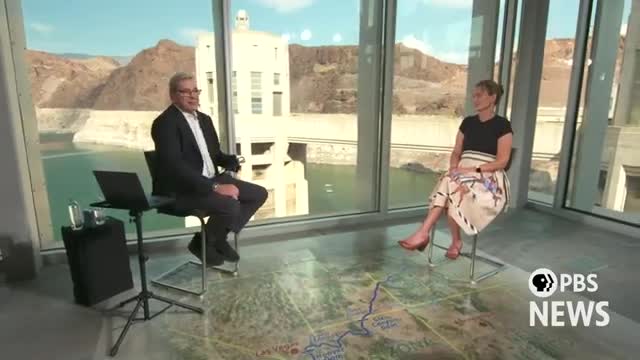Beavers to the rescue in Colorado River restoration efforts

This article was created by AI summarizing key points discussed. AI makes mistakes, so for full details and context, please refer to the video of the full meeting. Please report any errors so we can fix them. Report an error »

The Colorado River, a vital water source for 40 million people, faces significant environmental challenges due to extensive damming and water management practices. Stretching from the Rocky Mountains to the Sea of Cortez, the river's natural flow has been drastically altered, impacting ecosystems and water quality.
Currently, around 100 dams regulate the river, providing essential water and electricity but also disrupting its natural state. The Glen Canyon Dam, in particular, has been highlighted for its detrimental effects, trapping sediment and nutrients that would otherwise support downstream habitats, including those of endangered species.
In response to these challenges, innovative solutions are being explored. In Colorado and Wyoming, efforts are underway to reintroduce beavers, which naturally create dams that enhance water retention, improve vegetation, and support diverse wildlife. These beaver dams can help mitigate some of the environmental damage caused by human-made structures by slowing water flow and recharging groundwater supplies.
Additionally, adaptive management strategies are being implemented to periodically release water in ways that mimic natural flow patterns, allowing sediment and nutrients to flow downstream. Recent high flow experiments have shown promise in restoring some ecological balance.
The river's delta, once a thriving wetland, has suffered greatly, rarely receiving water since the 1980s. However, collaborative efforts between the U.S. and Mexico to release short pulses of water have begun to revive parts of this critical habitat, although experts caution that these measures are merely temporary fixes.
As discussions continue around the future of the Colorado River, the importance of balancing human needs with environmental sustainability remains a central theme. Karen Kwan, associate project director at the Colorado River Sustainability campaign, emphasizes the need for ongoing dialogue and innovative solutions to protect this essential resource.
Currently, around 100 dams regulate the river, providing essential water and electricity but also disrupting its natural state. The Glen Canyon Dam, in particular, has been highlighted for its detrimental effects, trapping sediment and nutrients that would otherwise support downstream habitats, including those of endangered species.
In response to these challenges, innovative solutions are being explored. In Colorado and Wyoming, efforts are underway to reintroduce beavers, which naturally create dams that enhance water retention, improve vegetation, and support diverse wildlife. These beaver dams can help mitigate some of the environmental damage caused by human-made structures by slowing water flow and recharging groundwater supplies.
Additionally, adaptive management strategies are being implemented to periodically release water in ways that mimic natural flow patterns, allowing sediment and nutrients to flow downstream. Recent high flow experiments have shown promise in restoring some ecological balance.
The river's delta, once a thriving wetland, has suffered greatly, rarely receiving water since the 1980s. However, collaborative efforts between the U.S. and Mexico to release short pulses of water have begun to revive parts of this critical habitat, although experts caution that these measures are merely temporary fixes.
As discussions continue around the future of the Colorado River, the importance of balancing human needs with environmental sustainability remains a central theme. Karen Kwan, associate project director at the Colorado River Sustainability campaign, emphasizes the need for ongoing dialogue and innovative solutions to protect this essential resource.
View full meeting
This article is based on a recent meeting—watch the full video and explore the complete transcript for deeper insights into the discussion.
View full meeting